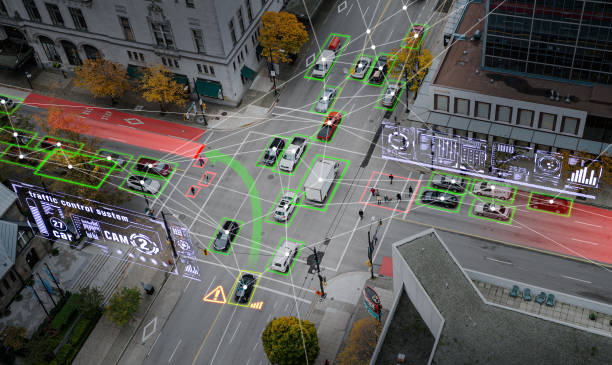How To Implement IoT in Smart City Infrastructure

The Internet of Things (IoT) is a network of physical objects that are embedded with sensors, software, and other technologies that enable them to collect and exchange data.
IoT has the potential to revolutionize many industries, including healthcare, transportation, and manufacturing.
Smart cities are cities that use technology to improve the lives of their citizens. Smart cities use IoT to collect data about everything from traffic flow to air quality to parking availability.
This data can then be used to make better decisions about how to manage the city.
Benefits of implementing IoT in smart city infrastructure

There are many benefits to implementing IoT in smart city infrastructure. Some of the key benefits include:
- Improved efficiency: IoT can help cities to operate more efficiently by automating tasks and streamlining processes. For example, IoT can be used to automate traffic lights, which can reduce congestion and improve air quality.
- Reduced costs: IoT can help cities to reduce costs by optimizing services and reducing waste. For example, IoT can be used to optimize waste collection routes, which can save the city money on fuel and labor costs.
- Enhanced sustainability: IoT can help cities to become more sustainable by reducing their environmental impact. For example, IoT can be used to monitor energy consumption and reduce greenhouse gas emissions.
- Improved quality of life: IoT can help to improve the quality of life for citizens by making cities more livable and enjoyable. For example, IoT can be used to provide real-time information about public transportation schedules and parking availability.
How to implement IoT in smart city infrastructure
There are a number of steps involved in implementing IoT in smart city infrastructure. Some of the key steps include:
- Identify the city’s needs: The first step is to identify the city’s needs and priorities. What are the city’s biggest challenges? What are the city’s goals? Once the city’s needs have been identified, the city can develop a plan to implement IoT solutions that will address those needs.
- Develop a roadmap: Once the city has a plan, it needs to develop a roadmap for implementation. This roadmap should include the following:
- A timeline for implementation
- A budget for implementation
- A list of the resources that will be needed
- Choose the right technologies: The city needs to choose the right IoT technologies for its needs. There are a variety of IoT technologies available, so the city needs to carefully consider its needs and budget when making its selection.
- Deploy the IoT solutions: Once the city has chosen the right IoT technologies, it needs to deploy them. This may involve installing sensors, software, and other hardware.
- Integrate the IoT solutions with existing systems: The city needs to integrate the IoT solutions with its existing systems, such as its transportation system and its energy management system.
- Manage the IoT solutions: The city needs to manage the IoT solutions once they are deployed. This may involve monitoring the systems, collecting data, and performing maintenance.
Case studies
There are a number of cities around the world that have successfully implemented IoT solutions. Here are a few case studies:
- Barcelona, Spain: Barcelona has used IoT to improve its traffic flow, reduce its energy consumption, and improve its air quality. For example, Barcelona has installed sensors on its roads to monitor traffic flow. Wired says this data is used to optimize the city’s traffic lights and reduce congestion.
- San Francisco, USA: San Francisco has used IoT to improve its parking system and reduce its environmental impact. For example, San Francisco has installed sensors in its parking garages to monitor parking availability. This data is used to provide real-time information to drivers about parking availability. This helps to reduce the amount of time that drivers spend looking for parking, which reduces fuel consumption and emissions.
- Singapore: Singapore has used IoT to create a more sustainable and livable city. For example, Singapore has installed sensors on its buildings to monitor energy consumption. This data is used to optimize the city’s energy use and reduce greenhouse gas emissions. Singapore has also used IoT to develop a smart transportation system. This system uses sensors to monitor traffic flow and optimize public transportation schedules.
FAQs about How to implement IoT in smart city infrastructure
What are some of the challenges of implementing IoT in smart city infrastructure?
Some of the challenges of implementing IoT in smart city infrastructure include:
- Cost: Implementing IoT solutions can be expensive.
- Security: IoT solutions can be vulnerable to cyberattacks.
- Privacy: IoT solutions collect a lot of data, which raises privacy concerns.
How can cities overcome the challenges of implementing IoT?
Cities can overcome the challenges of implementing IoT by:
- Developing a clear plan: Cities should develop a clear plan for implementing IoT. This plan should include a timeline, a budget, a list of the resources that will be needed, and a plan for addressing security and privacy concerns.
- Partnering with private companies: Cities can partner with private companies to develop and implement IoT solutions. According to Techtarget, this can help to reduce the cost of implementation and to access the expertise of private companies.
- Educating the public: Cities should educate the public about the benefits and risks of IoT. This will help to build public support for IoT projects and to reduce privacy concerns.
What are some of the future trends in IoT for smart cities?
Some of the future trends in IoT for smart cities include:
- The use of artificial intelligence (AI): AI will be used to analyze IoT data and to develop more intelligent and efficient IoT solutions.
- The use of blockchain: Blockchain will be used to secure IoT networks and to make IoT data more tamper-proof.
- The development of new IoT technologies: New IoT technologies, such as 5G and low-power wide-area networks (LPWANs), will make it possible to deploy IoT solutions on a larger scale.
Conclusion
IoT has the potential to revolutionize cities around the world. By implementing IoT solutions, cities can improve their efficiency, reduce their costs, enhance their sustainability, and improve the quality of life for their citizens.
Cities should carefully consider their needs and challenges when developing and implementing IoT solutions. Cities should also partner with private companies and educate the public about the benefits and risks of IoT.








